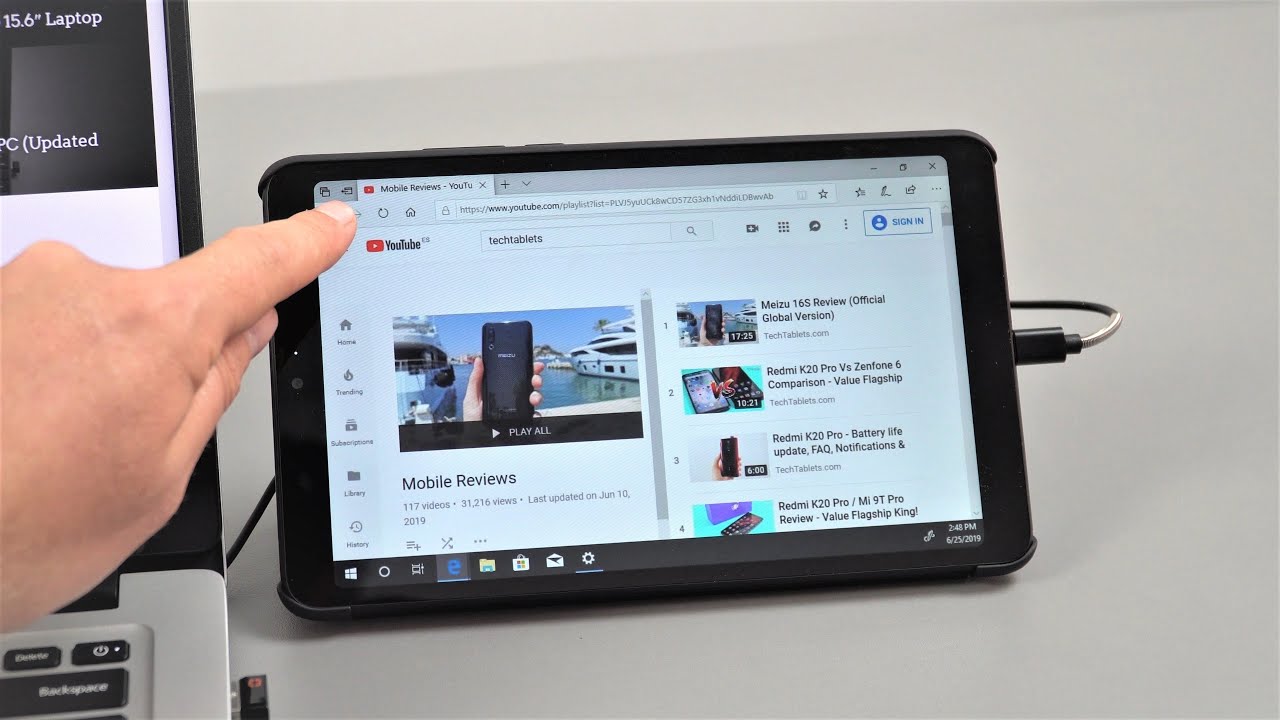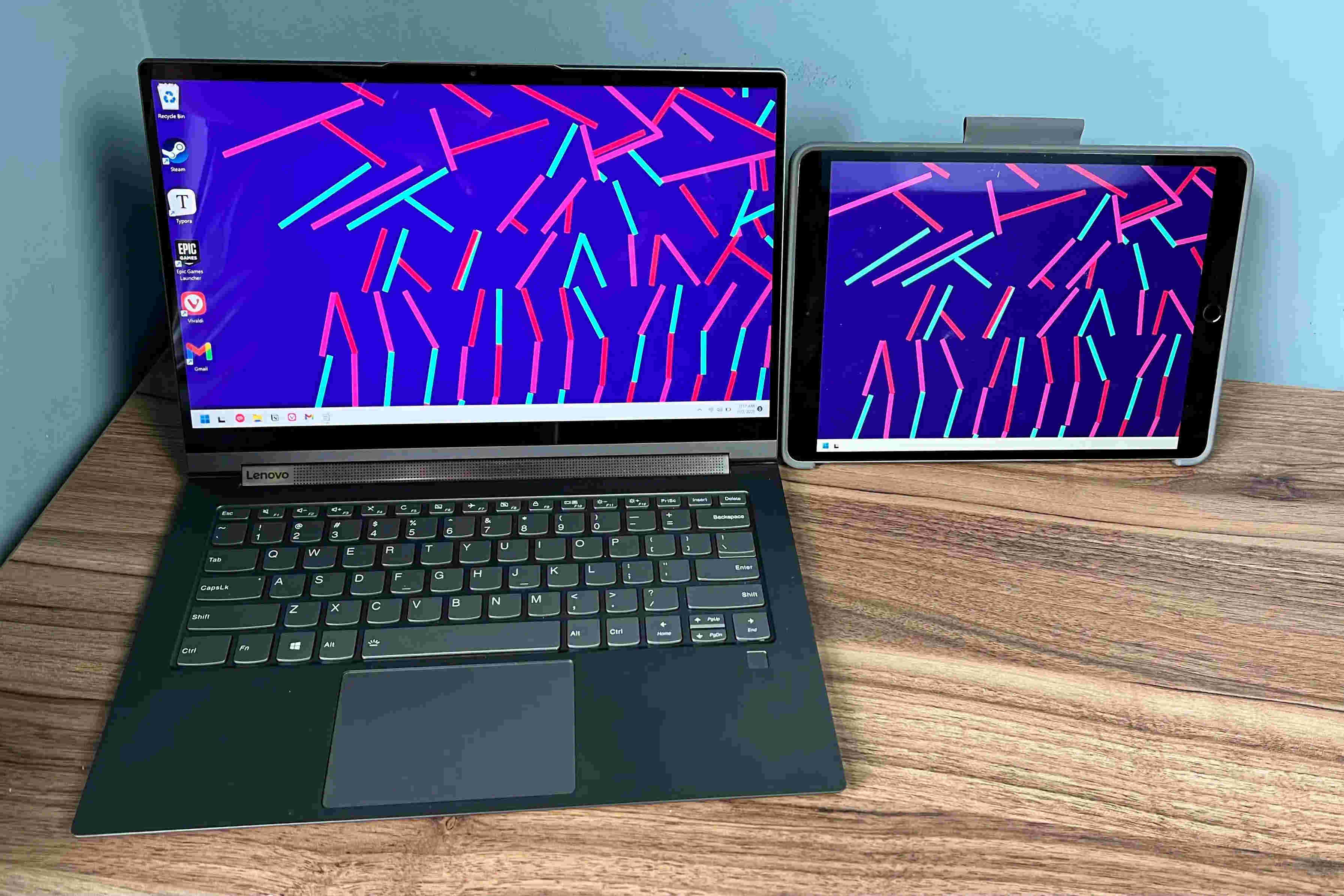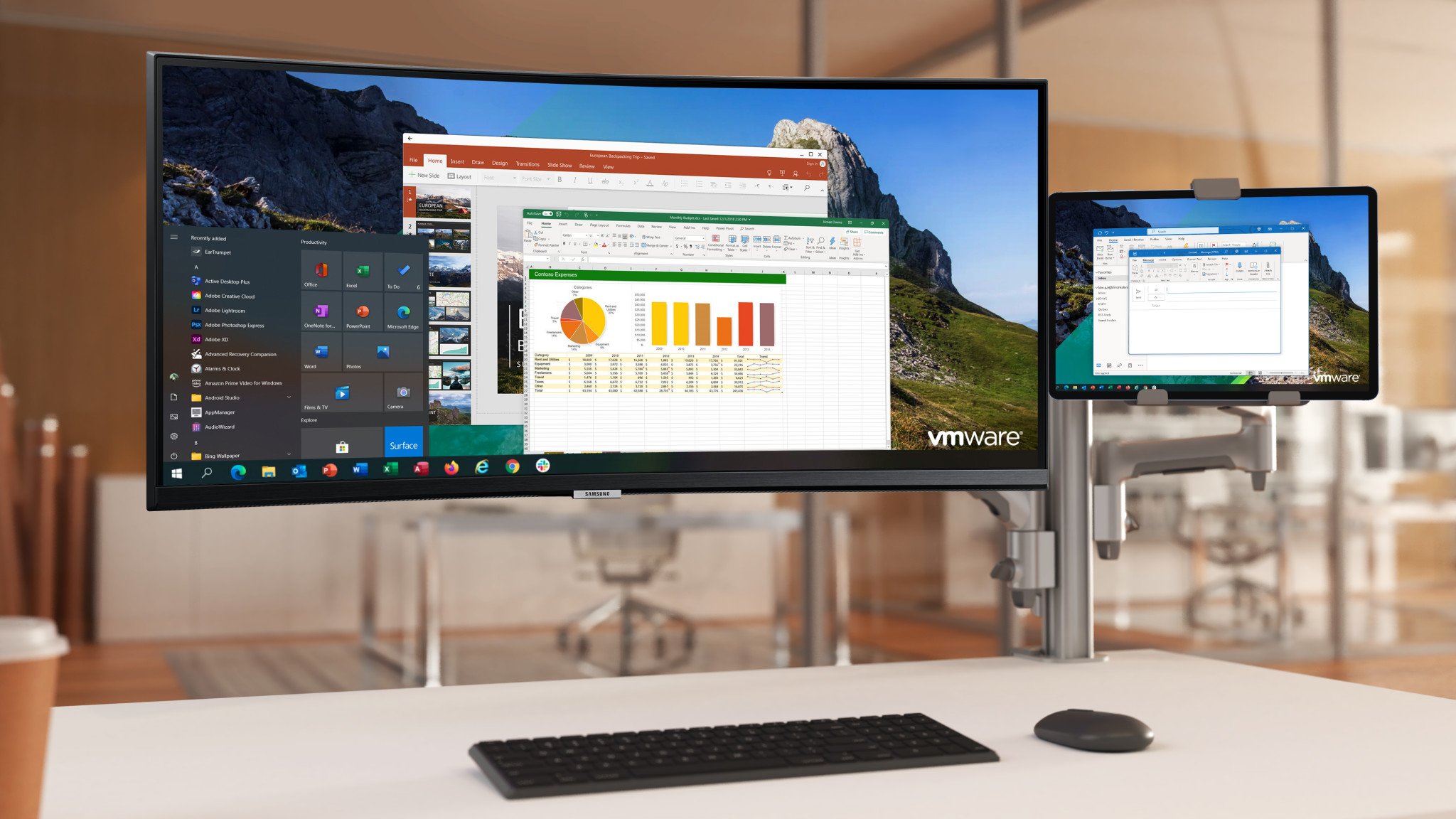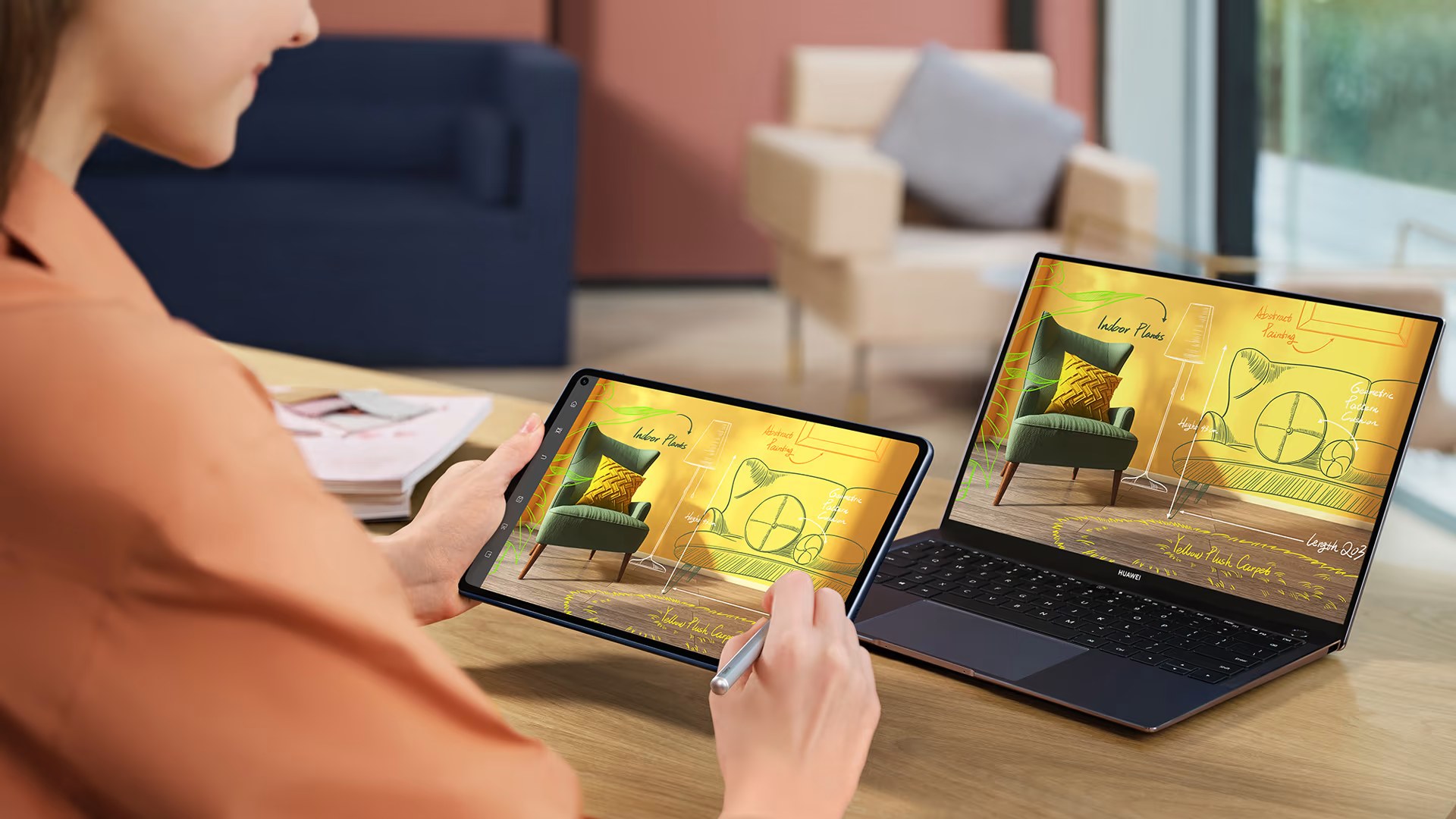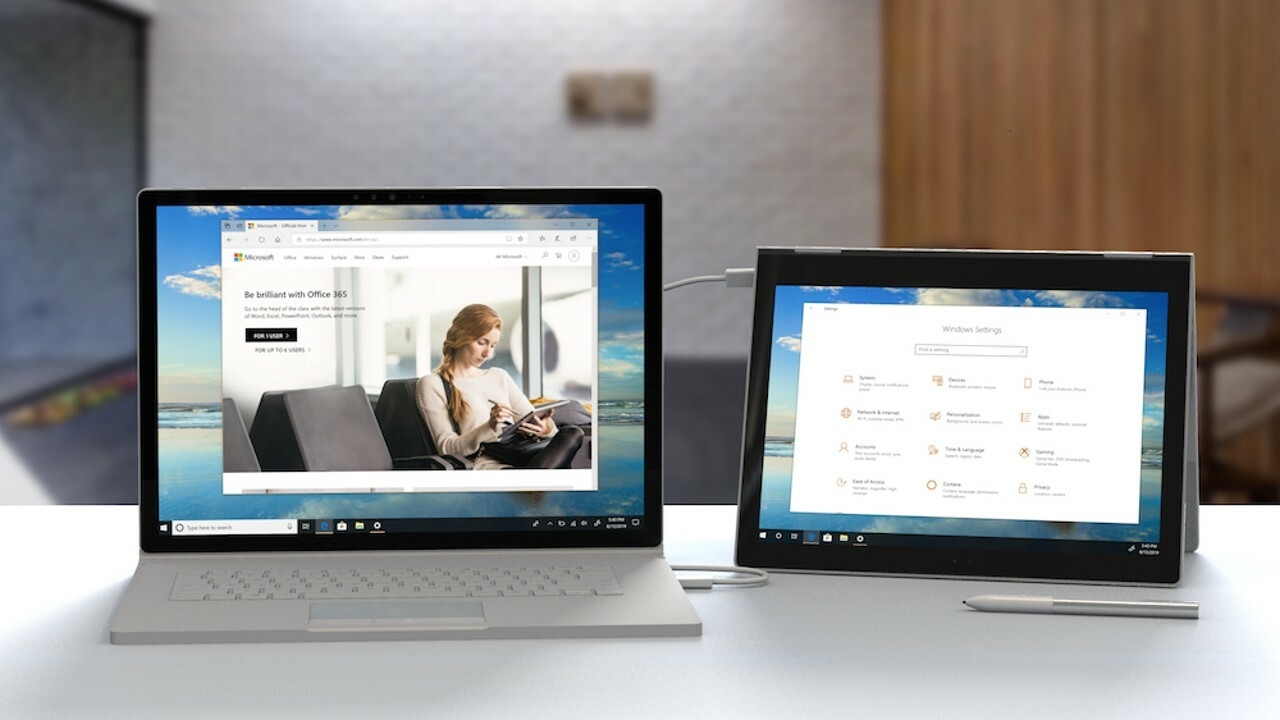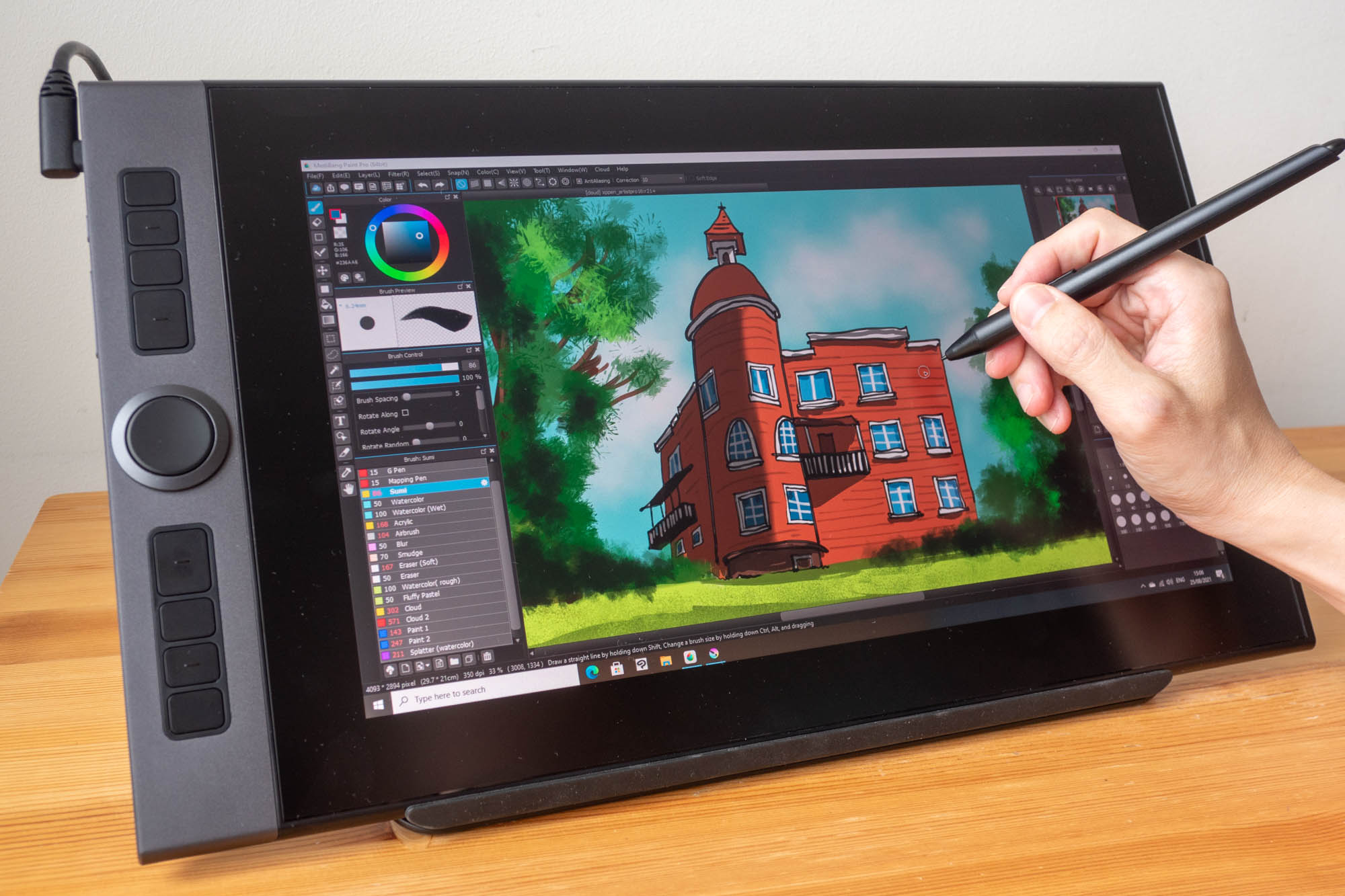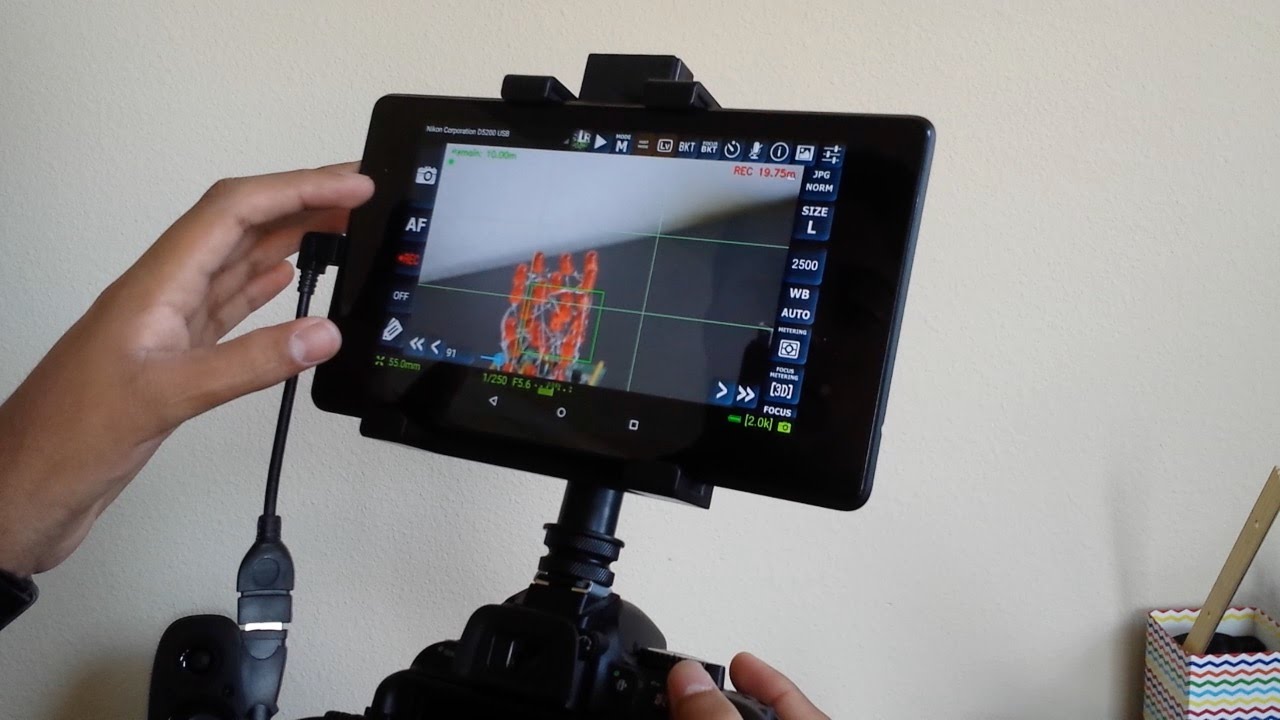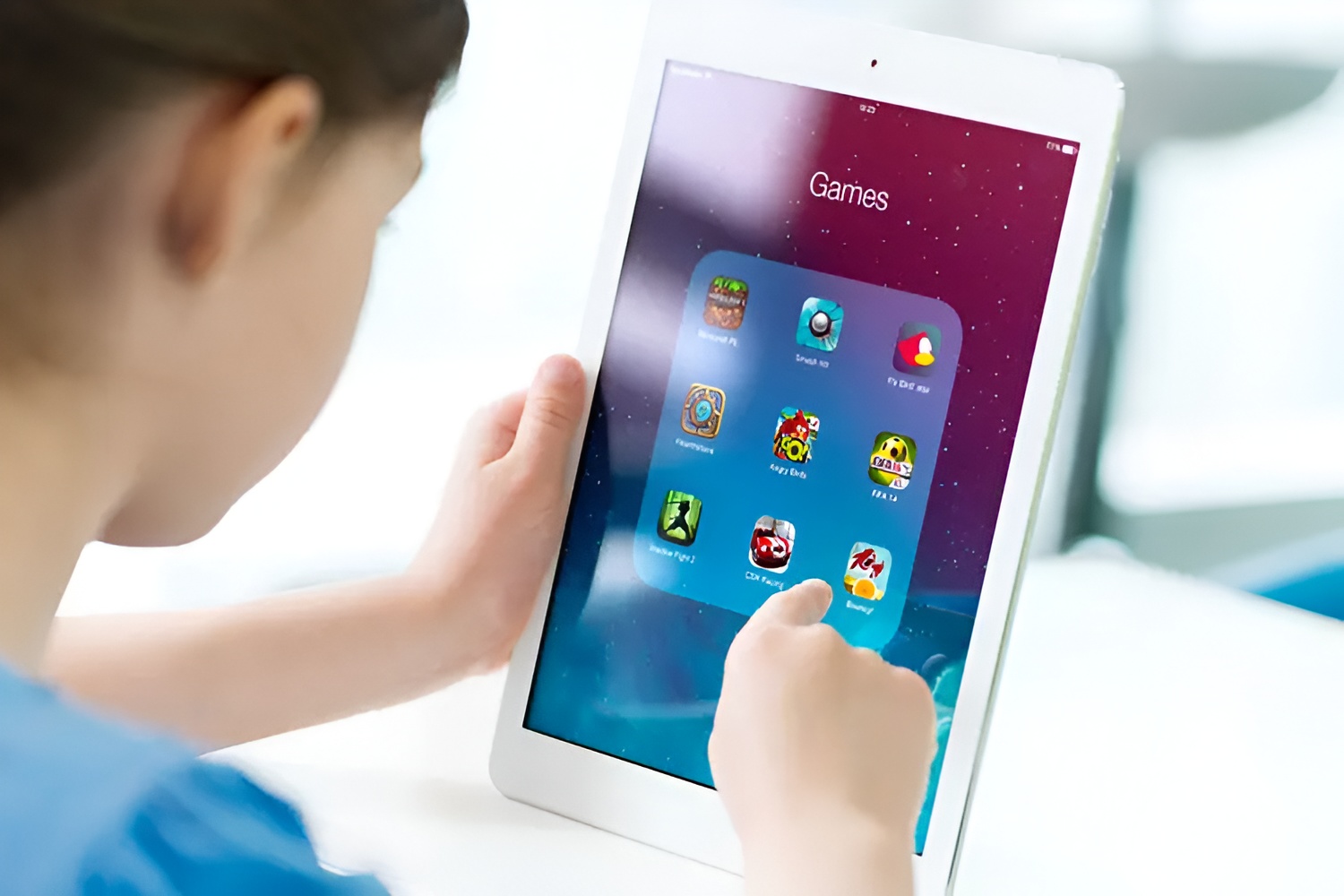Introduction
Welcome to our guide on how to use a tablet as a monitor! As technology continues to evolve, finding new ways to maximize the functionality of our devices has become increasingly important. If you have a tablet gathering dust or simply want to expand your screen real estate, turning your tablet into a secondary monitor is a fantastic solution.
Using a tablet as a monitor offers several advantages, including increased productivity, improved multitasking capabilities, and enhanced portability. Whether you’re a student, professional, or casual computer user, the ability to extend your workspace can greatly enhance your overall user experience. Additionally, utilizing a tablet as a monitor can be a cost-effective alternative to purchasing a separate monitor, making it an excellent option for those on a budget.
But before we dive into the details, it’s important to determine if your tablet is compatible with this setup and if you have the necessary requirements. While most modern tablets can be used as a monitor, the specific methods and compatibility may vary. In our guide, we will cover the general steps to connect your tablet to your computer and configure the display settings, as well as provide some troubleshooting tips for common issues that may arise.
So, if you’re ready to transform your tablet into a functional and versatile monitor, let’s get started with the step-by-step guide on how to connect and configure it with your computer!
Advantages of Using a Tablet as a Monitor
Using a tablet as a monitor offers a plethora of advantages that can greatly enhance your computing experience. Let’s delve into the key benefits of utilizing a tablet in this way:
- Increased Productivity: One of the main advantages of using a tablet as a monitor is the ability to expand your screen real estate. This means you can have multiple applications, documents, or web pages open simultaneously, making it easier to multitask and boosting your overall productivity. Whether you’re working on a project that requires referencing different sources or simply want a larger workspace, a tablet as a monitor can significantly improve your workflow.
- Improved Multitasking: The added screen space provided by using a tablet as a monitor allows for seamless multitasking. You can have your primary work or project on your computer’s main screen, while using the tablet as an additional screen for tasks such as monitoring email, chat applications, or social media. This setup ensures that your primary workspace remains clutter-free and optimized for the task at hand.
- Enhanced Portability: Tablets are lightweight and portable, making them ideal for on-the-go professionals or students. By using your tablet as a monitor, you can easily take your extended workspace with you wherever you go. This flexibility allows you to work or study in various locations without sacrificing the convenience of having multiple screens.
- Cost-effective Solution: Investing in an additional monitor can be costly, especially if you’re on a tight budget. However, if you already have a tablet, repurposing it as a secondary monitor can be a cost-effective alternative. This not only saves you money but also reduces clutter on your desk by eliminating the need for multiple physical monitors.
- Seamless Integration: Most tablets seamlessly integrate with computers, allowing for easy connectivity and setup. With the right software and connections, you can configure your tablet as a monitor in a matter of minutes, without the need for complex hardware installations.
These advantages make using a tablet as a monitor a practical and efficient solution for those looking to expand their screen space and optimize their workflow. Now that you’re aware of the benefits, let’s proceed to the next section where we’ll discuss the compatibility requirements and the step-by-step guide to connect your tablet to your computer.
Compatibility and Requirements
Before you begin using your tablet as a monitor, it’s important to ensure that your device meets the necessary compatibility requirements. While most tablets can be used as a monitor, there are a few key factors to consider:
Operating System Compatibility:
Check if your tablet’s operating system is compatible with the computer’s operating system. Most tablets, including those running iOS and Android, can be used as secondary monitors with both Windows and Mac computers. However, it’s essential to verify if your specific tablet model is compatible with the computer system you’re using.
Connectivity Options:
Another crucial consideration is the available connectivity options on your tablet and computer. There are several methods to connect your tablet as a monitor, such as using a USB cable, Wi-Fi connection, or through a specialized app. Ensure that your tablet and computer have compatible ports and connectivity capabilities, or explore alternative options such as wireless display adapters if necessary.
Software and Apps:
Research and identify suitable software or apps that allow you to connect your tablet as a monitor. Some popular options include apps like Duet Display, Splashtop Wired XDisplay, or Air Display, which provide seamless connectivity and display functionality. Ensure that you download the appropriate software for your tablet’s operating system and follow the installation instructions carefully.
System Requirements:
Ensure that your tablet and computer meet the minimum system requirements for using the tablet as a monitor. These requirements may include a certain amount of available storage space, RAM, and processor specifications. By meeting these requirements, you can ensure smooth and efficient performance when using your tablet as a secondary monitor.
By checking the compatibility and requirements before you begin, you can avoid any potential issues and ensure a seamless experience when using your tablet as a monitor. Once you have confirmed the compatibility, let’s move on to the next section, where we will provide a step-by-step guide on how to connect your tablet to your computer.
Step-by-Step Guide: Connecting Your Tablet to Your Computer
Now that you have ensured the compatibility and met the requirements, it’s time to connect your tablet to your computer and start using it as a monitor. Follow these step-by-step instructions:
- Choose the Connection Method: Determine the connection method based on the available options and your tablet’s compatibility. You can choose between a USB connection, Wi-Fi connection, or a specialized app.
- Connect via USB: If you opt for a USB connection, connect your tablet to your computer using a USB cable. Ensure that the cable is working properly and that both devices recognize the connection.
- Connect via Wi-Fi: If you prefer a wireless connection, ensure that both your tablet and computer are connected to the same Wi-Fi network. Use the appropriate software or app to establish a connection between the two devices.
- Install the Required Software or App: If you haven’t already done so, install the software or app on both your tablet and computer. Follow the installation instructions provided by the manufacturer of the software or app.
- Configure Display Settings: Once the connection is established, you may need to configure the display settings on your computer. Go to the display settings menu and extend the display to include the tablet as a secondary monitor. Adjust the resolution and orientation settings to your preference.
- Test and Adjust: Test the connection by moving your cursor from your computer’s screen to the tablet screen. Check if the touch functionality is working correctly. If needed, make any necessary adjustments to achieve optimal performance.
Following these steps will enable you to successfully connect your tablet to your computer and use it as a secondary monitor. However, please note that the specific steps and options may vary depending on your tablet model and the software or app you are using.
Now that you know how to connect your tablet as a monitor, let’s move on to the next section, where we will guide you through the process of configuring the display settings for an optimal viewing experience.
Step-by-Step Guide: Configuring Display Settings
Once you have successfully connected your tablet to your computer as a secondary monitor, it’s time to configure the display settings to ensure an optimal viewing experience. Follow these step-by-step instructions:
- Access the Display Settings: On your computer, right-click on the desktop and select “Display settings” (Windows) or “System Preferences” followed by “Displays” (Mac) to access the display settings menu.
- Locate the Multiple Displays Menu: In the display settings menu, locate the “Multiple displays” or “Arrangement” tab, depending on your operating system.
- Extend the Display: Enable the extended display mode to use your tablet as a secondary monitor. This will allow you to have a separate workspace on the tablet while your computer’s main display remains as the primary workspace.
- Arrange the Displays: Drag and drop the displays in the arrangement menu to mimic the physical positioning of your tablet relative to your computer. This step ensures that the cursor movement between the screens is natural and corresponds with their physical arrangement.
- Adjust Resolution and Orientation: If needed, adjust the resolution and orientation settings for the tablet display according to your preference. Higher resolutions provide crisper visuals, while orientation settings allow you to choose between landscape and portrait mode.
- Apply and Save Settings: Once you have made the necessary adjustments, click “Apply” or “OK” to save the display settings. Your tablet will now function as a secondary monitor, extending your workspace.
Following these steps will help you configure the display settings for your tablet as a monitor. Remember, the specific options and menu names may vary slightly depending on your operating system. Take some time to explore the display settings menu to familiarize yourself with the available customization options.
Now that you have successfully connected and configured your tablet as a monitor, let’s move on to the next section, where we will provide some additional tips and tricks to enhance your tablet as a monitor experience.
Additional Tips and Tricks
Now that you have your tablet successfully connected and configured as a monitor, here are some additional tips and tricks to enhance your experience:
- Adjust Display Settings: Play around with different resolution settings to find the one that suits you best. Depending on your tablet’s screen size and your preferences, you can choose a resolution that provides a balance between sharpness and readability.
- Optimize Touch Functionality: If your tablet supports touch input, make sure the touch functionality is enabled. This will allow you to interact with your tablet as you would with a regular tablet, providing a seamless user experience.
- Organize and Manage Your Workspace: Take advantage of the extended workspace by organizing applications and windows on different screens. Utilize virtual desktops or window management software to keep things organized and maximize productivity.
- Explore Gestures and Shortcuts: Some tablet apps or software provide additional gestures or shortcuts for navigating between screens or managing windows. Familiarize yourself with these gestures or customize your own shortcuts to streamline your workflow.
- Use a Stylus for Precision: If you require precise input on your tablet, consider using a stylus. A stylus can improve accuracy when writing, drawing, or navigating through applications, providing a more comfortable and natural experience.
- Consider Mounting and Stand Options: To enhance ergonomics and convenience, explore different mounting or stand options for your tablet. This will allow you to position the tablet at a comfortable viewing angle, reducing strain on your neck and providing a better overall experience.
- Keep Your Tablet Charged: Using your tablet as a monitor can drain the battery more quickly than usual. Make sure to keep your tablet charged or connected to a power source to prevent any interruptions during your work or entertainment sessions.
By following these additional tips and tricks, you can fully optimize your tablet as a monitor setup to suit your specific needs and preferences. Now, armed with these insights, you are ready to dive into the world of extended screen real estate and enjoy the benefits of a larger workspace.
Troubleshooting Common Issues
While setting up and using your tablet as a monitor is generally straightforward, you may encounter some common issues along the way. Here, we address a few troubleshooting solutions to help you overcome these challenges:
- Connection Problems: If you’re experiencing difficulty establishing a connection between your tablet and computer, check the cables or wireless connection. Ensure that the USB cable is properly connected, or if using Wi-Fi, verify that both devices are connected to the same network.
- Driver and Software Updates: Keep your tablet’s drivers and the software or app you’re using up to date. Sometimes, outdated drivers or software can cause compatibility issues. Check for updates from the manufacturer’s website or app store to ensure optimal performance.
- Resolution and Display Issues: If you encounter problems with the resolution or display settings, try adjusting the display settings on your computer. Experiment with different resolution options until you find the desired clarity and readability.
- Touchscreen Responsiveness: If the touchscreen on your tablet is not responding accurately, ensure that the touch functionality is enabled in the settings. Additionally, clean the screen or remove any screen protectors that may be interfering with touch sensitivity.
- Lag or Delay: In some cases, you may experience lag or delay when using your tablet as a monitor. This can be caused by various factors, such as a slow Wi-Fi connection or software compatibility issues. Restarting your devices, closing unnecessary background applications, or using a wired connection can help alleviate these problems.
- Compatibility Issues: If you’re unable to connect your tablet or experience compatibility issues, ensure that your tablet’s operating system is compatible with the software or app you’re using. Check the software or app’s system requirements and verify if your tablet meets those specifications.
If you encounter persistent issues that you’re unable to resolve, consult the manufacturer’s documentation or support resources for further guidance. They may have specific troubleshooting guides or customer support available to assist you in solving the problem.
With these troubleshooting tips in mind, you’ll be well-equipped to overcome any challenges that may arise during the process of using your tablet as a monitor. Now, let’s move on to the concluding section where we summarize the key aspects of this guide.
Conclusion
Congratulations! You have reached the end of our guide on how to use a tablet as a monitor. By repurposing your tablet, you can take advantage of the additional screen space, increase your productivity, and enhance your computing experience.
We explored the advantages of using a tablet as a monitor, including increased productivity, improved multitasking capabilities, enhanced portability, and cost-effectiveness. We also discussed the compatibility requirements and provided a step-by-step guide to connect your tablet to your computer and configure the display settings.
In addition, we shared some useful tips and tricks to optimize your tablet as a monitor usage, such as adjusting display settings, utilizing touch functionality, organizing and managing your workspace, and exploring gestures and shortcuts. We also provided troubleshooting solutions for common issues that you may encounter during the setup or usage process.
Remember, while the steps and options discussed in this guide are generally applicable, some variations may exist based on your specific tablet model, operating system, and software or app you choose to use.
We hope that this guide has been informative and helpful in assisting you with turning your tablet into a functional secondary monitor. Unlock the potential of your technology and enjoy the benefits of an expanded workspace that can boost your productivity and simplify multitasking.
So what are you waiting for? Connect your tablet to your computer, configure the display settings, and begin your journey toward a more efficient and enjoyable computing experience!







